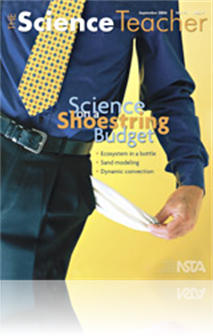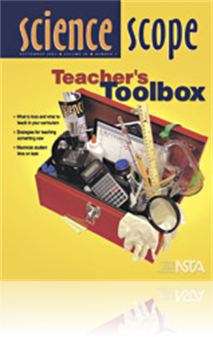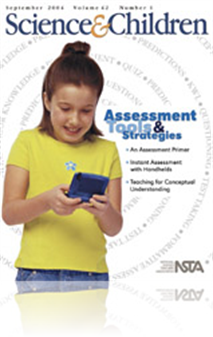All Resources
Journal Article
Earth science teaches know how frustrating it can be to spend hundreds of dollars on three-dimensional (3-D) models of Earth’s geologic features, only to use the models for a few class periods. To avoid emptying an already limited science budget, t...
Journal Article
After the Bell: Creating junior ethologists
Did you ever think that observing your dog, cat, fish, bird, or reptile could prepare you for long-term science investigations? Indeed it can! The basis for developing scientific thinking is improving observation skills. Through observation, students...
Journal Article
Ask the Experts—September 2004
The experts address the following question in this month’s column: Why do geckos make sounds and why mostly at night?...
Journal Article
Astrobiology is a relatively new field of study in science, one that has found a home in the curriculum of many universities. At the middle level, this multidisciplinary field is an exciting mix of topics and questions that can help students see how ...
Journal Article
Just for once, skip the usual first day of school routine that includes seating charts, questionnaires, textbook distribution, and so on, and try a little science instead. By implementing this inquiry-based lesson into your science curriculum, studen...
Journal Article
Typically, teachers use simple models that employ differences in temperature and density to help students visualize convection. However, most of these models are incomplete or merely hint at (instead of model) convective circulation. In order to make...
Journal Article
Favorite Demonstration: MOM Teaches Chemistry
Bring in an expert to demonstrate simple chemistry concepts—MOM! Milk of Magnesia (MOM) is used in this practical demonstration that is simple to do, safe to perform, and engages students as they try to figure out and hypothesize what’s going on....
Journal Article
The Gateway Science Workshop is a peer-facilitated, problem-focused program designed to improve student retention in the sciences. This article discusses its development, implementation, and efficacy, which is demonstrated by higher retention of work...
Journal Article
Every student should be provided with high quality teaches who provide high quality instruction in support of student learning and achievement. So then the question is, “How do we make that happen?” Basically, there are two strategies that teache...
Journal Article
Students use deductive reasoning and their powers of observation to identify mystery items in a sealed, brown-paper bag. By using items such as bells, bags of water, coffee beans, and bags of frozen vegetables, teachers can encourage students to util...
Journal Article
Idea Bank: Roller Coaster Inquiry
This project, which centers on roller coaster design, engages students in learning about physics and activates their prior knowledge in an open-inquiry environment. The activity also gets students involved with inquiry and group work during the first...
Journal Article
Editor's Note (September 2004)
The act of having students commit to an outcome makes them think. It is different than oral brainstorming because everyone is accountable. Students may not volunteer exactly what they are thinking. Like everyone else, they may just summarize. Stu...






